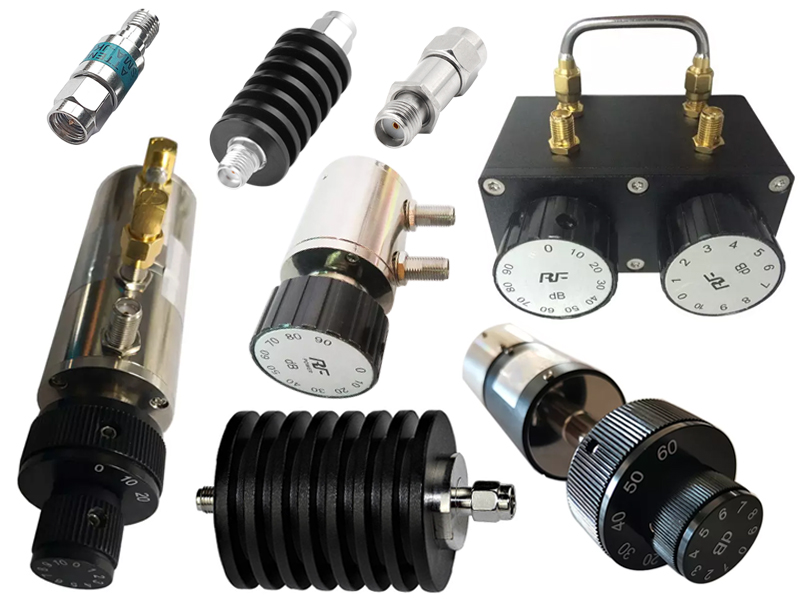-
We’re On Call 24/7 : +8613538296050
-
E-mail : anna@rohoconnector.com
We’re On Call 24/7 : +8613538296050
E-mail : anna@rohoconnector.com
In the intricate world of RF (Radio Frequency) and microwave engineering, managing signal strength is not just a convenience—it's a necessity. Whether you're protecting sensitive equipment from overpowering signals or ensuring accurate measurements, the humble attenuator is a critical component in your toolkit. Among the various connector types, SMA attenuators are arguably the most ubiquitous, especially in applications from DC to 18 GHz and beyond.
Today, we'll break down the classification of SMA attenuators and delve into the key performance characteristics that define their quality and application.
An SMA attenuator is a passive device designed to reduce the power level of an RF signal without significantly distorting its waveform. It features standard SMA connectors (typically male or female) on both ends, known for their robust, screw-type coupling mechanism that provides excellent performance up to 18 GHz and is usable even up to 26.5 GHz.
SMA attenuators can be classified based on several key criteria:
1. By Attenuation Value:
Fixed Attenuators: These provide a single, constant value of attenuation, such as 3 dB, 10 dB, or 20 dB. They are simple, reliable, and cost-effective. They are further classified by their power handling capabilities (e.g., low-power for bench testing, high-power for transmitter systems).
Variable Attenuators: These allow users to adjust the attenuation level manually. They are essential for testing and tuning circuits.
Step Attenuators: Offer precise, fixed increments of attenuation (e.g., 1 dB, 10 dB steps) selected via a switch. They provide excellent accuracy and are staples in laboratory environments.
Continuously Variable Attenuators: Allow for smooth adjustment over a range (e.g., 0-20 dB). They are perfect for applications requiring fine-tuning.
2. By Circuit Technology:
Coaxial Attenuators: The most common type for SMA connectors, they use a resistive material inside a coaxial layout. This design ensures good impedance matching and high-frequency performance.
Chip Attenuators: These are surface-mount devices (SMDs) but are often housed in an SMA package for easy integration into test setups.
3. By Power Handling Capability:
Low-Power Attenuators (e.g., 1-2 Watts): Standard for most benchtop testing and signal analysis.
High-Power Attenuators (e.g., 10W, 50W, 100W+): Used in transmitter lines, to protect spectrum analyzers from high-power signals, or to simulate realistic load conditions.

When selecting an SMA attenuator, it's not just about the dB value. Several performance parameters are crucial:
Attenuation Value & Accuracy: This is the primary specification—how much signal loss the device introduces. Accuracy is usually given as a tolerance (e.g., ±0.5 dB). High-precision attenuators have tighter tolerances.
Frequency Range: A critical spec! A 10 dB attenuator will not perform the same at 500 MHz as it does at 10 GHz. Performance must be specified over a frequency range.
VSWR (Voltage Standing Wave Ratio): This measures how well the attenuator is impedance-matched to the system (typically 50 ohms). A lower VSWR (closer to 1:1) is better, indicating minimal signal reflection. High-quality attenuators maintain a low VSWR across their entire frequency range.
Power Rating: The maximum average power (in Watts) the attenuator can handle continuously without being damaged. Exceeding this value can cause permanent failure.
Connector Type & Gender: SMA connectors come in male (pin) and female (socket) versions. Ensuring the correct gender and a high-quality connector plating (e.g., gold over nickel) is vital for a reliable connection and low loss.
Temperature Stability: The attenuation value can drift with changes in temperature. This is specified as a coefficient (e.g., dB/°C). For outdoor or harsh environment applications, this is a key consideration.
The right SMA attenuator depends entirely on your application:
For general benchtop testing, a standard fixed SMA attenuator with a suitable power rating and good frequency coverage is perfect.
For precise, repeatable measurements in an R&D lab, a high-accuracy step attenuator is indispensable.
For field testing or systems near a transmitter, a rugged, high-power attenuator is necessary to protect your valuable equipment.
By understanding their classification and paying close attention to their performance specs, you can select the perfect SMA attenuator to ensure signal integrity, protect your gear, and achieve accurate results in any RF application.